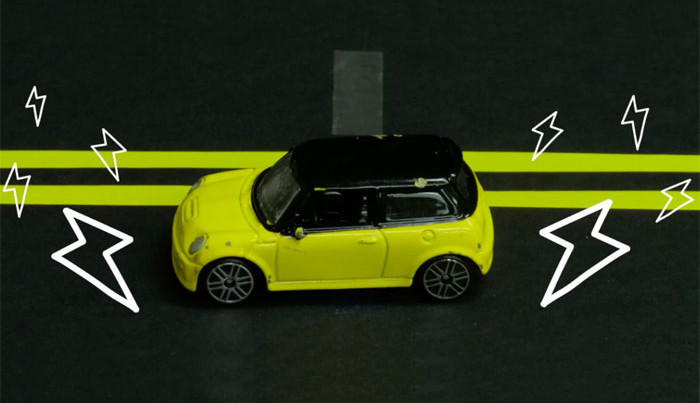Recharge as you drive
April 03, 2018
on
on

It’s not long now; in just a few short years electric will be the standard means of propulsion used by most new cars on offer in showrooms around the world. It’s accepted that vehicles store energy on-board to power the motor hence the interest and ongoing research to improve battery energy density. High-capacity batteries will produce significant intermittent loading during recharging using the existing power distribution network, which may require additional generator capacity and higher capacity power lines. To help reduce the loading there have been some whacky ideas suggesting methods to transfer energy to a vehicle as it moves down the highway thereby allowing the use of a much smaller on-board battery.
Electric trams running on rails have been around for years, receiving energy from overhead power lines and pantograph-mounted pickups but this could not be extended for use by public vehicles. It might make the journey to work a bit less boring if we all use fairground dodgems or ‘bumper cars’ but the necessary infrastructure is of course out of the question.
Supplying energy via contact-less charging loops is another possibility. For parked vehicles, this is not a big problem, except that it is more expensive and more lossy than a standard mechanical plug and socket recharging arrangement. Extending this idea, charging coils could be installed in the highway surface but for any country with an extensive highway system this would be prohibitively expensive and provide poor efficiency due to the distance to the pickup coil in the car. Without effective shielding this type of power transfer system could also be a source of disturbance to any critical medical implants worn by the driver or passengers, credit card magnetic strips and other types of magnetic storage media. An alternative slimmed-down version has been suggested which uses highway-surface imbedded charging coils only at traffic lights and other places where vehicles are stationary. This would undoubtedly reduce the installed infrastructure costs but not get around all the other technical disadvantages of the system.
This is where researchers at the University of Colorado come in, they question why use magnetic fields when electric fields may be a better option? Special ‘charging’ lanes in the highway would be fitted with plates rather than coils, to beam high-frequency alternating electric fields to vehicles passing overhead. This would for sure, result in less installed copper. The usable capacity of a vehicle floor however is quite limited, the frequency and amplitude of the signal would need to be very high, and losses incurred enormous, making the idea somewhat impractical and even dangerous. It would seem that you can’t outsmart the basic laws of physics… not even electrically.
Electric trams running on rails have been around for years, receiving energy from overhead power lines and pantograph-mounted pickups but this could not be extended for use by public vehicles. It might make the journey to work a bit less boring if we all use fairground dodgems or ‘bumper cars’ but the necessary infrastructure is of course out of the question.
Supplying energy via contact-less charging loops is another possibility. For parked vehicles, this is not a big problem, except that it is more expensive and more lossy than a standard mechanical plug and socket recharging arrangement. Extending this idea, charging coils could be installed in the highway surface but for any country with an extensive highway system this would be prohibitively expensive and provide poor efficiency due to the distance to the pickup coil in the car. Without effective shielding this type of power transfer system could also be a source of disturbance to any critical medical implants worn by the driver or passengers, credit card magnetic strips and other types of magnetic storage media. An alternative slimmed-down version has been suggested which uses highway-surface imbedded charging coils only at traffic lights and other places where vehicles are stationary. This would undoubtedly reduce the installed infrastructure costs but not get around all the other technical disadvantages of the system.
This is where researchers at the University of Colorado come in, they question why use magnetic fields when electric fields may be a better option? Special ‘charging’ lanes in the highway would be fitted with plates rather than coils, to beam high-frequency alternating electric fields to vehicles passing overhead. This would for sure, result in less installed copper. The usable capacity of a vehicle floor however is quite limited, the frequency and amplitude of the signal would need to be very high, and losses incurred enormous, making the idea somewhat impractical and even dangerous. It would seem that you can’t outsmart the basic laws of physics… not even electrically.
Read full article
Hide full article


Discussion (0 comments)